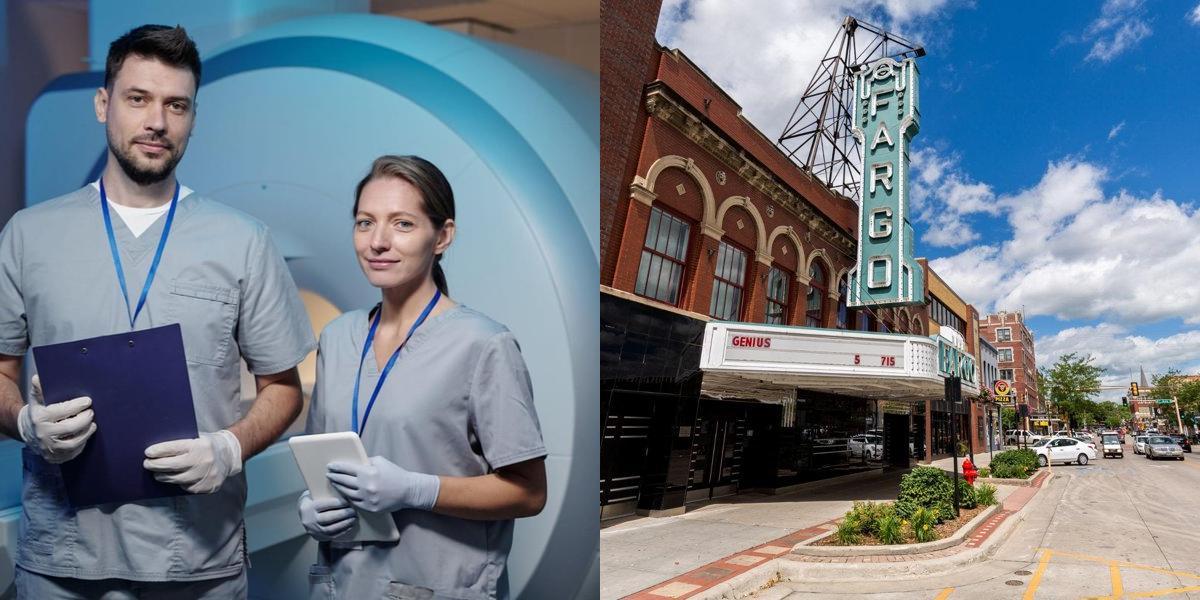How to Become a Radiology Technician in North Dakota

What is a Radiology Technician?
Radiology Technicians, also known as Radiologic Technologists, are healthcare professionals who use specialized equipment to create diagnostic images of the human body. Their primary responsibilities include:
- Positioning patients and operating imaging equipment, such as X-ray machines, CT scanners, and MRI machines
- Preparing and administering contrast media, such as dyes or radioactive substances, to enhance the visibility of specific body structures
- Analyzing the quality of the images and making adjustments as needed
- Maintaining detailed records of the procedures performed
Article continues after recommendations
Recommended for you
Where does a Radiology Technician work?
Radiology Technicians typically work in hospitals, outpatient clinics, diagnostic imaging centers, and private physician offices. They may also find employment in specialized settings, such as emergency rooms, surgery centers, and mobile imaging units.
How to Become a Radiology Technician in North Dakota?
To become a Radiology Technician in North Dakota, one must first complete an accredited radiography program, which typically takes 2 years. Next, they must obtain certification by passing the American Registry of Radiologic Technologists (ARRT) exam. After certification, they can search for job opportunities in hospitals, clinics, or imaging centers, earning a competitive salary commensurate with their skills and experience.
What are the requirements to become a Radiology Technician in North Dakota?
To become a Radiology Technician in North Dakota, you must meet the following requirements:
- Complete an accredited Radiologic Technology program, which typically takes 2-3 years to complete and results in an associate's degree or certificate
- Pass the American Registry of Radiologic Technologists (ARRT) certification exam
- Obtain a license from the North Dakota Department of Health, Division of Health Facilities
Exploring a Career in Radiology Technician Outside North Dakota
If you've been inspired to follow the path of a Radiology Technician but geography isn't on your side, worry not. Your aspiration to become a Radiology Technician is within reach in District of Columbia, Georgia, New Mexico, Tennessee, or Wisconsin. For those who don't find these options feasible, Dreambound enables you to effortlessly find and evaluate Radiology Technician classes by simply search by zip code. Armed with determination and Dreambound, anyone, anywhere, can achieve a career in healthcare.
How do I get my Radiology Technician certification?
To become certified as a Radiology Technician, you must:
- Graduate from an accredited Radiologic Technology program
- Pass the ARRT certification exam, which covers topics such as patient care, radiation physics and protection, and imaging procedures
- Maintain your certification through continuing education and professional development activities
Get courses selected just for you
Try our powerful search engine
How do I get a job as a Radiology Technician?
To find employment as a Radiology Technician in North Dakota, you can:
- Search for job postings on job boards, hospital websites, and professional networking sites
- Reach out to your program's career services office for job placement assistance
- Network with other Radiology Technicians and professionals in the field
- Consider internships or volunteer opportunities to gain hands-on experience
Career Paths and Opportunities after Becoming a Radiology Technician
After becoming a Radiology Technician, you may have opportunities to specialize in areas such as CT scanning, MRI, mammography, or radiation therapy. You could also pursue leadership roles, such as a Radiology Supervisor or Department Manager. Additionally, some Radiology Technicians choose to further their education and become Radiologist Assistants or Radiation Therapists.
Final Thoughts
Becoming a Radiology Technician in North Dakota can be a rewarding and in-demand career path. By meeting the educational and certification requirements, you can play a vital role in the healthcare system, using advanced imaging technology to diagnose and treat patients. With the right skills, dedication, and career planning, you can find fulfilling job opportunities and build a successful career in this dynamic field.
If you're considering a career shift or curious about different professional paths, Dreambound has written many guides to help you in making informed decisions. Here are a few:

Athena is Co-founder and CEO of Dreambound.





